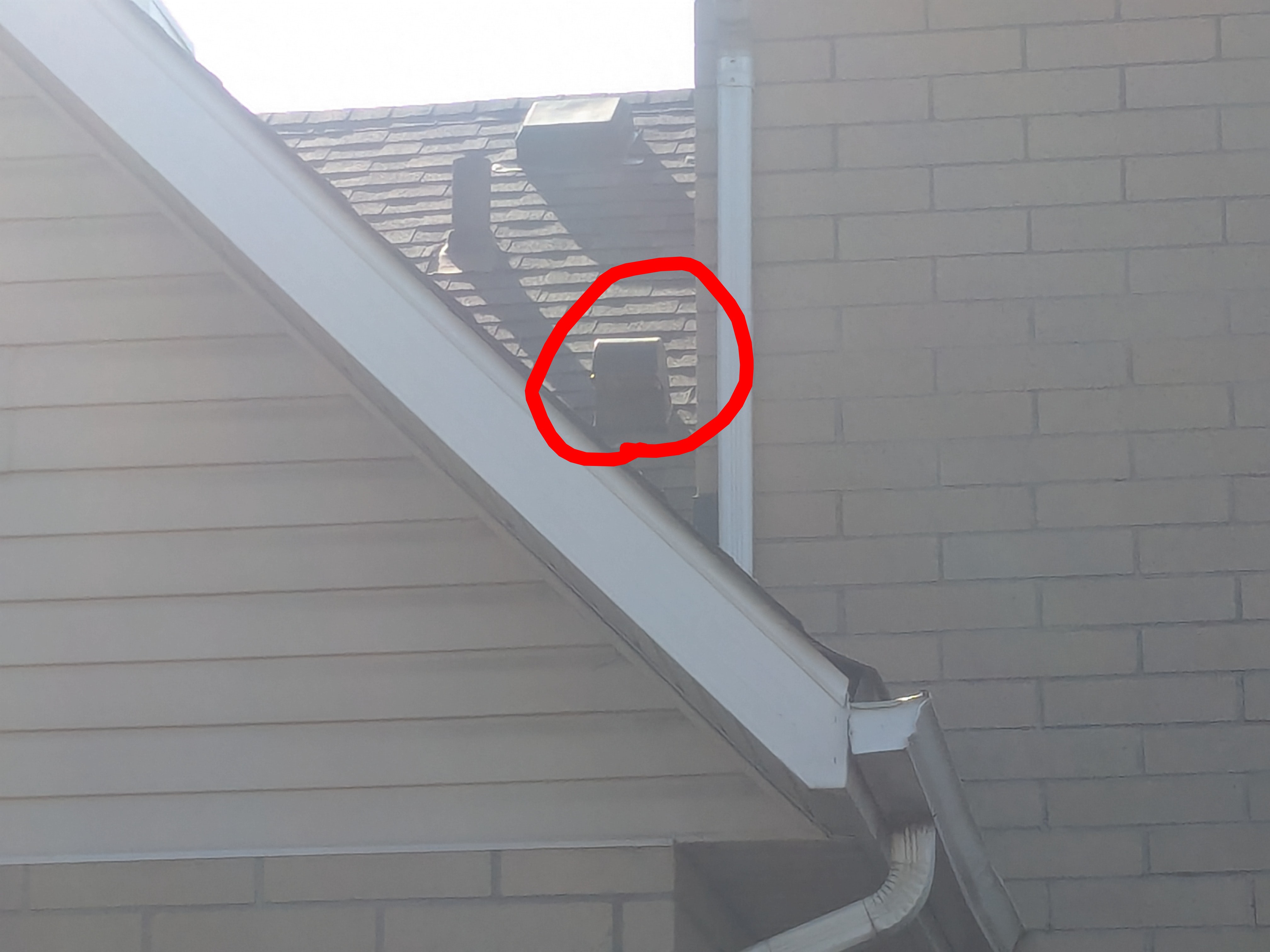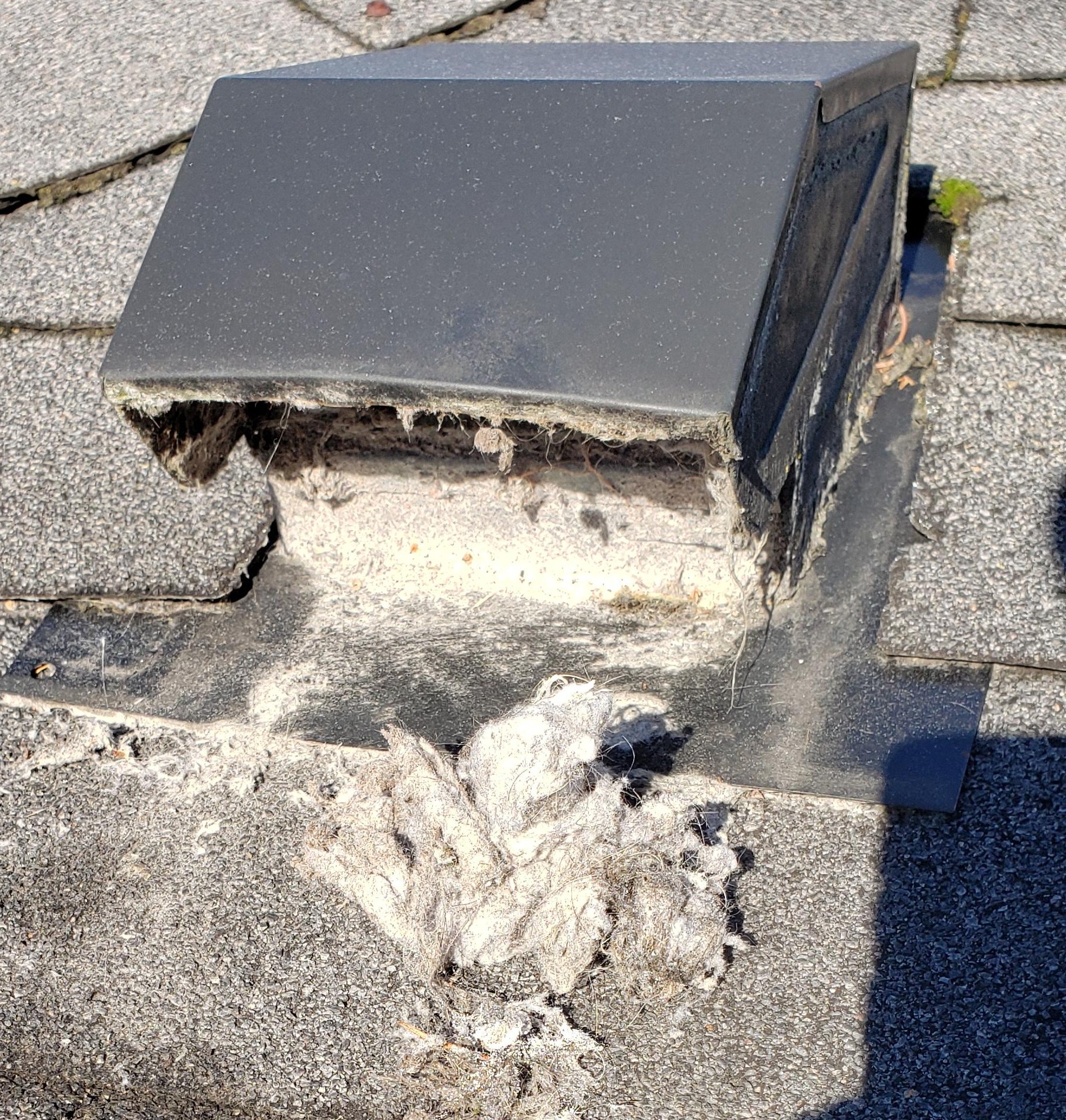Service call came in on a Tuesday afternoon. Customer complained her dryer was taking over 4 hours to completely dry a single load of laundry. "Something must be wrong with this machine," she said, frustrated after running three cycles on high heat just to dry one basket of towels.
I arrived expecting to find a faulty heating element or broken sensor. Instead, I discovered something far more dangerous.
Discovery: It Wasn't a Dryer Problem
First thing I checked: dryer was blowing extremely hot air. Heating element worked perfectly. Drum spun smoothly. No mechanical issues whatsoever. This is typical of most dryers—they're built robust and rarely fail mechanically.
Then I looked up.

Dryer roof vent showing visible blockage from exterior
Roof vent was completely clogged. Even from ground level, blockage was obvious. Closer inspection revealed this:

Close-up view: thick blanket of lint forming complete blockage
Thick blanket of lint had formed a nearly complete blockage. Hot, moist air from dryer had nowhere to go. Machine was working overtime trying to dry clothes in what was essentially a sealed chamber.
Since roof vent was under building management control, I offered to clean it if she could get written permission from her property management. I was ready to go up there and clear that dangerous blockage, but ultimately she needed to coordinate with her building first.
Why Your Dryer Seems Broken (But Probably Isn't)
If your dryer is taking forever to dry clothes or your electrical bills have spiked, issue is rarely with dryer itself. Modern dryers are exceptionally well-built. What fails is ventilation system:
- Clogged roof vents: Lint accumulates at exit point, restricting airflow
- Blocked vent hoses: Flexible ductwork collects lint, especially at bends and connections
- Dirty lint screens: Forgotten or overlooked between loads
- Compressed transition hoses: Dryer pushed too close to wall, crushing exhaust hose
This Is Not Just an Efficiency Problem
Customer in this story was lucky. Her only issue was wasted time and high electricity bills. But lint buildup in dryer vents creates serious fire hazard.
According to National Fire Protection Association (NFPA), clothes dryers cause an average of 15,970 home fires annually in United States alone, resulting in:
- 13 deaths per year
- 444 injuries per year
- $238 million in direct property damage annually
Leading cause? Failure to clean. NFPA reports that 32% of dryer fires were caused by failure to clean, and 27% started when dust, fiber, or lint ignited.
In Canada, dryers represent approximately 2% of structural fires and account for highest share of appliance fires at 92%, according to fire safety data.
Essential Maintenance: Protect Your Home
After Every Load
Clean your lint screen. Every. Single. Load. No exceptions.
- Remove lint from screen before starting next load
- Once a month, wash screen with warm soapy water to remove residue from fabric softeners and dryer sheets
- Check for tears or damage—replace if needed
Once a Year
Inspect entire vent system. This annual checkup can save your home:
- Check dryer vent hose connection: Where flexible duct connects to dryer is prime spot for lint accumulation. Disconnect, vacuum thoroughly, reconnect securely.
- Inspect full vent run: From dryer to exterior vent cap, check for kinks, compressions, or damage
- Clean roof or exterior vent: Remove vent cap, clear all lint buildup (like what we found in photos above)
- Verify proper airflow: Run dryer and check that air exits freely from exterior vent
Watch for Warning Signs
These symptoms indicate your dryer vent needs immediate attention:
- Clothes taking longer than 40-45 minutes to dry
- Clothes are extremely hot to touch after cycle
- Burning smell during operation
- Laundry room feels unusually hot and humid
- Lint visible around dryer door or on outside of machine
- Vent hood flap doesn't open properly when dryer is running
Alberta-Specific Considerations
- Winter buildup: Cold Alberta winters mean more indoor drying, which increases lint accumulation rate
- Exterior vent icing: Moisture from dryer can freeze at exterior vent in extreme cold, creating blockage
- Longer vent runs: Many Alberta homes have dryers in basements with long vent runs to roof—more distance means more lint trap points
Lavash Rental Advantage
At Lavash Rentals, we go beyond simple installations. When we deliver your washer and dryer, we don't just drop them off and leave. We thoroughly inspect your entire venting system—something most rental companies skip entirely.
All maintenance and service calls are included at no extra cost. When you notice unusual drying times or performance issues, we investigate root cause. Our technicians check dryer mechanics, vent hose connections, full duct runs, and even exterior vent caps—because we know real issue is usually in ventilation, not in machine itself.
We check more than necessary because your safety matters more than saving five minutes on a service call.
Whether you own or rent your machines, make dryer vent maintenance a priority. Your time, your energy bill, and your family's safety depend on it.
Safety Reminder
If you haven't cleaned your dryer vent in over a year, or if you're experiencing any warning signs listed above, schedule a professional cleaning immediately. Don't wait for your next laundry day—do it today.